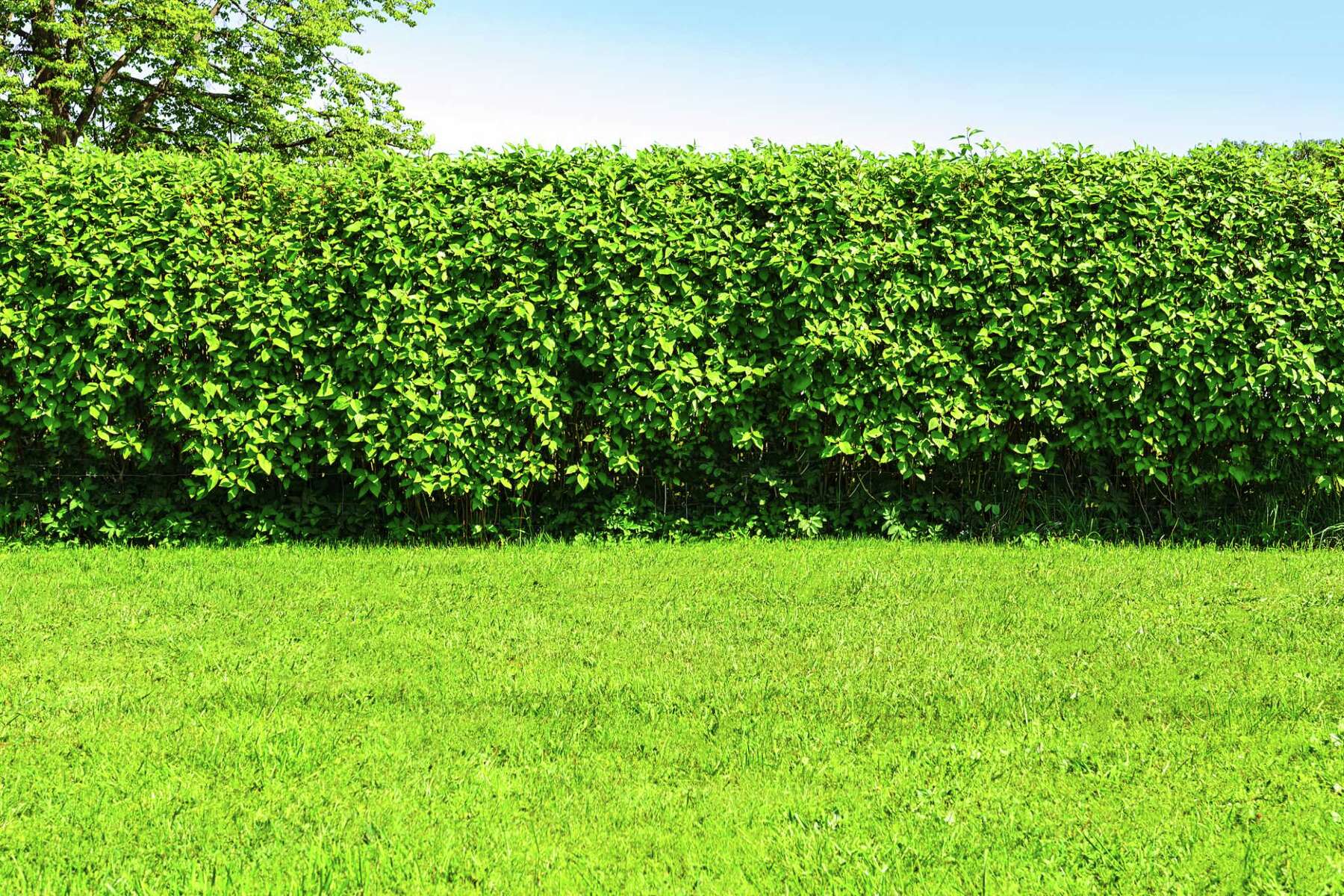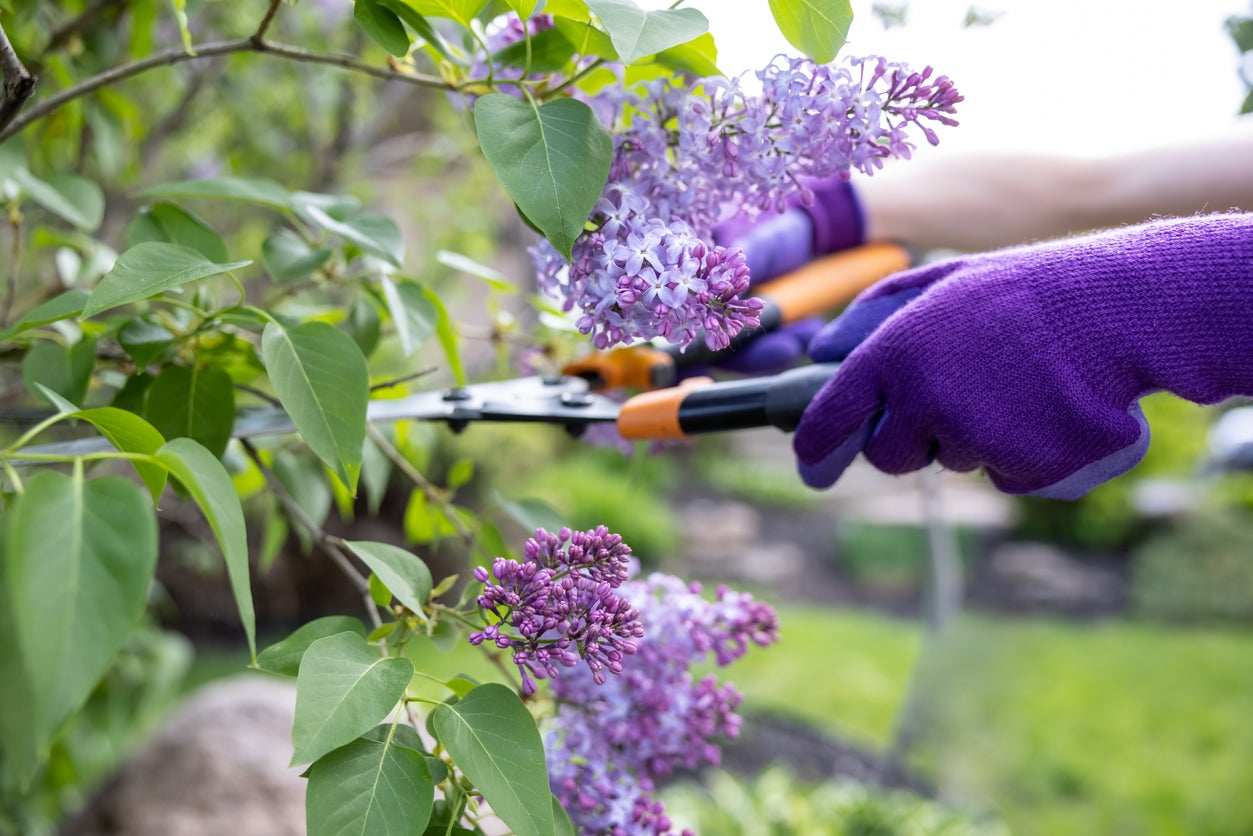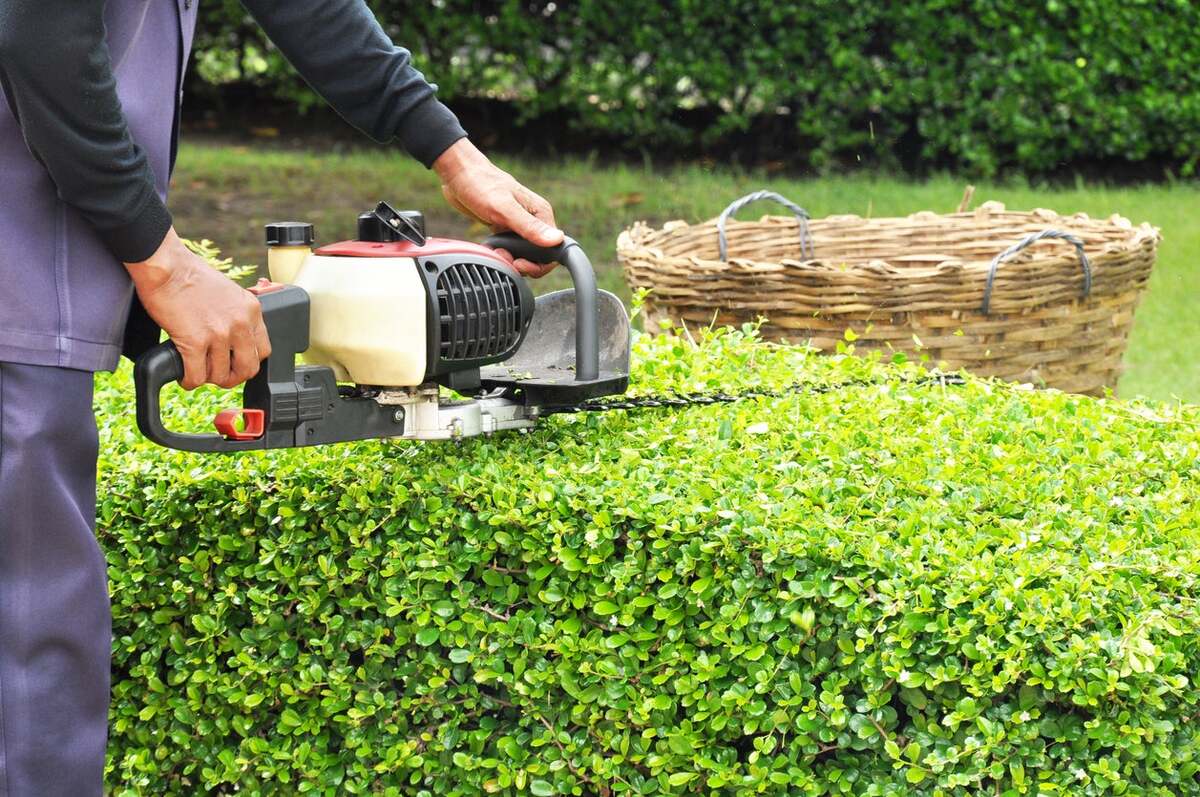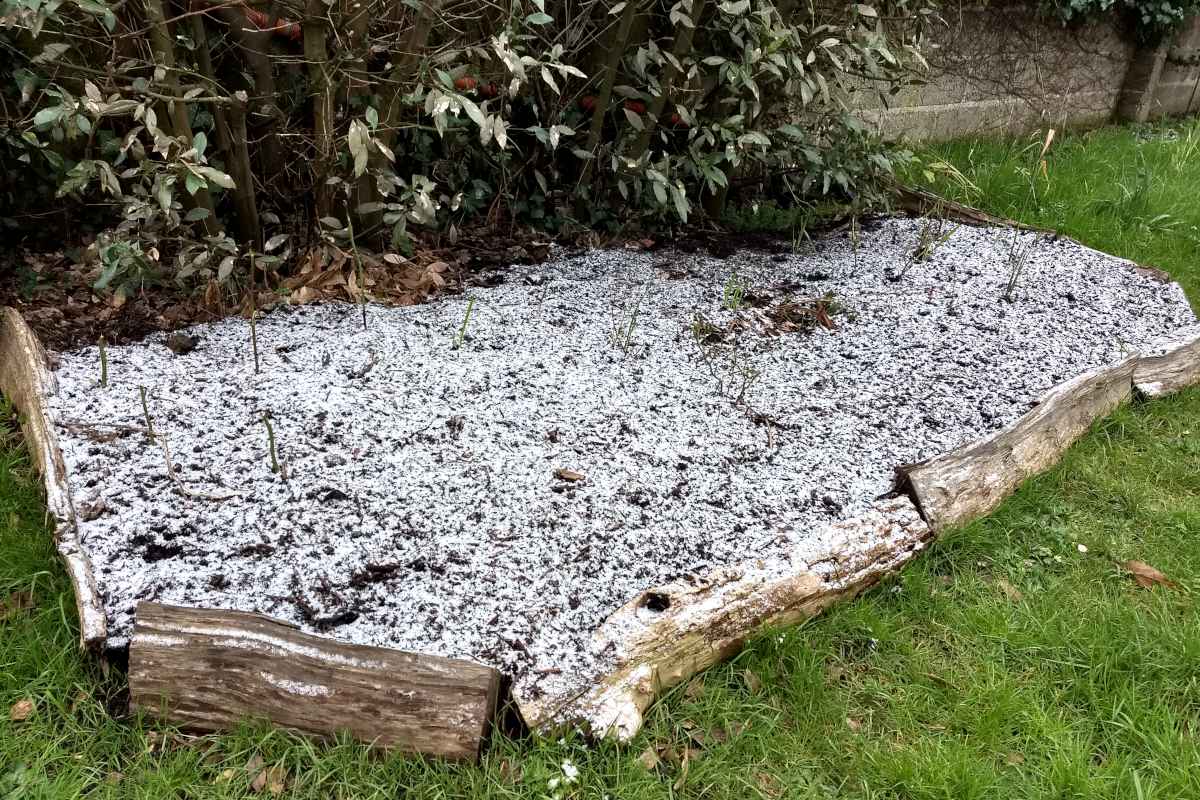Home>Gardening Tips and Tricks>Problem Solving>How To Treat Scale On Shrubs


Problem Solving
How To Treat Scale On Shrubs
Modified: January 22, 2024
Looking for effective ways to solve the problem of scale on your shrubs? Discover expert tips and treatments to treat scale infestation on shrubs and restore their health and beauty.
(Many of the links in this article redirect to a specific reviewed product. Your purchase of these products through affiliate links helps to generate commission for Chicagolandgardening.com, at no extra cost. Learn more)
Table of Contents
Introduction
Welcome to the world of gardening! If you’re an avid gardener or just starting out, it’s important to be familiar with the various challenges that can arise when caring for your plants. One common issue that many gardeners face is scale infestation on their shrubs.
Scale is a type of tiny insect that can wreak havoc on the health and appearance of your shrubs. These minuscule pests feed on the sap of plants, weakening them and inhibiting their growth. If left untreated, scale infestations can lead to stunted or distorted growth, yellowing leaves, and even the eventual death of your shrubs. However, with the right knowledge and proper treatment methods, you can effectively control and eliminate scale infestations on your beloved shrubs.
In this article, we will explore the signs and symptoms of scale infestation, different types of scales, and the various methods available to treat and prevent scale on your shrubs. Whether you’re dealing with a small-scale problem or a full-blown infestation, we will provide you with practical solutions that will help restore your shrubs to their former glory.
Before we dive into the methods of treatment, let’s take a closer look at the signs and symptoms of scale infestations. Understanding the telltale signs will enable you to act promptly and ensure the long-term health of your shrubs.
What is Scale on Shrubs?
Scale is a common pest that can affect a wide variety of shrubs. These tiny insects are typically oval-shaped and have a protective covering that resembles a scale or shell. The covering provides them with a form of defense and makes them difficult to detect and eliminate.
Scale insects feed on the sap of plants, using their piercing mouthparts to extract the vital fluids. As they feed, they excrete a sticky substance known as honeydew, which not only attracts ants but can also promote the growth of black sooty mold. This mold can cover the leaves and stems of your shrubs, further inhibiting their ability to photosynthesize and weakening their overall health.
The scale insects themselves come in various colors and sizes, depending on the species. They can be white, brown, black, or even translucent. Some scales have a hard outer shell, while others have a softer, wax-like coating. Regardless of their appearance, they all pose a threat to the well-being of your shrubs.
Scale infestations are most commonly found on the leaves and stems of shrubs, but they can also affect other parts of the plant, such as the branches and fruit. They typically cluster in groups, forming colonies that can quickly multiply and spread throughout your garden.
It’s important to note that scale insects can vary in their preferred plant hosts. Some species are specific to certain types of shrubs, while others can attack a wide range of plants. Being able to identify the type of scale infesting your shrubs is crucial in implementing the most appropriate treatment methods.
Now that we have a basic understanding of what scale is and how it affects shrubs, let’s explore the signs and symptoms that can indicate the presence of scale infestations.
Signs and Symptoms of Scale Infestation
Detecting a scale infestation early on is crucial for effective treatment and prevention. Here are some common signs and symptoms to look out for:
- Sticky residue: One of the first signs of scale infestation is the presence of a sticky residue known as honeydew. This substance is excreted by the scale insects as they feed on the sap of the shrub. The honeydew can attract ants, wasps, and bees, and can also lead to the growth of black sooty mold.
- Yellowing leaves: Scale infestations can cause the leaves of the shrub to turn yellow. This occurs because the insects are feeding on the sap, depriving the leaves of essential nutrients. In severe infestations, the leaves may become wilted or shriveled.
- Stunted growth: If your shrubs are not growing as vigorously as they once were, it could be due to a scale infestation. The insects extract nutrients from the plant, which can lead to stunted growth and weakened branches.
- Distorted or deformed leaves: As scale insects feed on the foliage, they can cause the leaves to become distorted or deformed. The affected leaves may appear wavy, curled, or have abnormal growth patterns.
- Visible scales: In some cases, you may be able to spot the actual scales on the surface of the plant. Depending on the species, they can range in size and color. They may appear as tiny bumps, shells, or waxy coatings on the leaves, stems, or branches of the shrub.
- Weakened branches: As scale infestations worsen, the shrub’s branches may start to weaken and become more prone to breakage. This can be particularly evident during windy or stormy weather.
If you notice any of these signs or symptoms on your shrubs, there’s a strong possibility that you’re dealing with a scale infestation. Once you’ve identified the presence of scale, the next step is to determine the specific type of scale insect in order to implement appropriate control measures.
Identifying the Type of Scale
There are various types of scale insects that can infest your shrubs, and each may require a slightly different approach when it comes to treatment. By identifying the specific type of scale infesting your shrubs, you can effectively target and control the infestation.
Here are a few common types of scale insects and how to identify them:
- Armored scales: These scales have a hard, protective covering that resembles a tiny shield. They are often dark brown or black in color and can vary in size depending on the species. Armored scales are typically found on the leaves, stems, and branches of shrubs. They are difficult to remove due to their hard outer shell.
- Soft scales: Soft scales, as the name suggests, have a softer and more pliable outer covering. They come in various colors, including brown, green, and red. Soft scales are typically larger than armored scales and may have a cottony or waxy appearance. They are commonly found on the undersides of leaves and stems.
- Crawlers: In addition to the adult scales, it’s important to be aware of the crawler stage. Crawlers are the young, mobile scale insects that emerge from eggs and actively move around to find a suitable feeding site. They are usually smaller and more vulnerable than adult scales. Identifying the presence of crawlers can indicate that a new generation of scales is about to infest your shrubs.
To identify the type of scale on your shrubs, carefully examine the affected areas with a magnifying glass. Look for the presence of shells, waxy coatings, honeydew, or any other noticeable signs that can help differentiate between the different types of scale insects.
If you’re unsure about the specific type of scale infestation, consult with a local extension office or a professional gardener. They can provide you with expert advice and guidance on how to best deal with the specific type of scale infesting your shrubs.
Now that we understand the signs and symptoms of scale infestations and how to identify the type of scale, let’s explore the different methods available to control and treat scale on your shrubs.
Cultural Methods to Control Scale
When it comes to dealing with scale infestations on your shrubs, prevention is key. Cultivating a healthy and balanced garden environment can help deter scales and keep their populations in check. Here are some cultural methods you can implement to control scale on your shrubs:
- Pruning: Regular pruning of your shrubs can help eliminate heavily infested branches or stems. Cut off and dispose of any areas that show signs of scale infestation, making sure to sanitize your pruning tools between cuts to prevent spreading the scales to unaffected areas.
- Improving air circulation: Proper air circulation is crucial in preventing and combating scale infestations. Trim branches and thin out the foliage to allow for better airflow, reducing the humidity levels that scales thrive in.
- Thorough cleaning: Scale insects can overwinter on fallen leaves and other debris around your shrubs. Regularly clean up and remove any leaf litter or plant debris to reduce the hiding places and breeding grounds for scales.
- Encouraging natural predators: Many beneficial insects, such as ladybugs, lacewings, and parasitic wasps, feed on scale insects. Create an inviting habitat for these predators by incorporating native plants, providing a water source, and minimizing the use of chemical pesticides that may harm beneficial insects.
- Deep watering: Scale insects are more likely to thrive in drought-stressed plants. Ensure your shrubs receive adequate water by deep watering at the base of the plant, promoting overall plant health and resilience against scale infestations.
- Regular monitoring: Keep a close eye on your shrubs throughout the growing season. Regularly inspect the foliage, stems, and branches for any signs of scale infestations. Early detection allows for prompt intervention and prevents scale populations from spreading and causing more damage.
Implementing these cultural methods can help reduce the risk of scale infestations and minimize their impact on your shrubs. However, in severe infestations or when other control methods are required, chemical treatments may be necessary.
Let’s explore the different chemical treatments available for scale infestations on shrubs.
Chemical Treatments for Scale Infestation
When cultural methods alone are not effective in controlling scale infestations on your shrubs, chemical treatments can provide an additional layer of defense. These treatments can help eliminate the scale insects and protect your shrubs from further damage. However, it’s important to use chemical pesticides responsibly and follow the instructions provided by the manufacturer. Here are some common chemical treatments for scale infestations:
- Insecticidal soaps: Insecticidal soaps are effective in controlling soft-bodied scale insects. These soaps work by disrupting the cellular integrity of the scales, ultimately leading to their demise. Apply the soap directly to the affected areas, making sure to cover all the scales. Repeat applications may be necessary as new generations of scales emerge.
- Horticultural oils: Horticultural oils are another effective option for controlling scale infestations. These oils suffocate the scales by coating their bodies and blocking their breathing pores. Apply the oil thoroughly to all parts of the shrub, ensuring full coverage. It’s best to apply horticultural oils when the temperatures are mild, avoiding hot and sunny days that can cause leaf damage.
- Systemic insecticides: Systemic insecticides are absorbed by the plant and transported throughout its tissues. They are particularly useful for controlling scale insects that have protective coverings, such as armored scales. The scales ingest the insecticide as they feed on the sap, resulting in their elimination. Follow the instructions on the product label for application rates and timing.
- Contact sprays: Contact sprays are insecticides that kill scale insects upon direct contact. They can provide quick control but may not be as effective for scales with protective coverings. Apply the spray thoroughly to the affected areas, making sure to target the scales directly.
Before using any chemical treatments, carefully read the instructions and follow all safety precautions. Keep in mind that excessive or improper use of pesticides can harm beneficial insects and pollute the environment. Whenever possible, opt for organic or least-toxic alternatives to minimize the impact on the ecosystem.
While chemical treatments can help control scale infestations, they should be used in conjunction with cultural methods and proper maintenance practices for long-term success. Next, let’s explore some natural remedies that can be used to combat scale on your shrubs.
Natural Remedies for Scale on Shrubs
If you prefer to take a holistic and environmentally-friendly approach to controlling scale infestations on your shrubs, there are several natural remedies you can try. While these remedies may not provide immediate results, they can help reduce scale populations over time. Here are some natural remedies for scale on shrubs:
- Manual removal: For small-scale infestations, manually removing the scales can be an effective method. Use a soft brush or cloth dipped in rubbing alcohol or soapy water to gently scrub off the scales. This method works best for soft scales and immature stages of scales. Dispose of the scales properly to prevent reinfestation.
- Beneficial insects: Introducing beneficial insects, such as ladybugs and lacewings, to your garden can help control scale populations naturally. These insects feed on scales and can help keep their numbers in check. Create a welcoming habitat for these beneficial insects by providing flowering plants, water sources, and shelter.
- Neem oil: Neem oil is a natural insecticide derived from the neem tree. It disrupts the feeding and growth of scale insects, ultimately leading to their demise. Dilute neem oil according to the instructions on the product label and apply it to the affected areas of your shrubs. Repeat applications may be necessary to effectively control the scales.
- Diatomaceous earth: Diatomaceous earth is a fine powder made from the fossilized remains of diatoms. Sprinkle a thin layer of diatomaceous earth around the base of your shrubs. As the scales crawl across the powder, it will penetrate their protective covering and cause dehydration, effectively killing them.
- Essential oils: Several essential oils, such as peppermint oil, rosemary oil, and citrus oil, have insecticidal properties. Dilute the essential oil in water, and spray the mixture on the affected areas of your shrubs. These oils can help suffocate and repel scale insects.
It’s important to note that natural remedies may require repeated applications and can take time to show noticeable results. Additionally, they may be more effective for smaller scale infestations. If the scale infestation is severe or persists despite natural remedies, you may need to consider other control methods, including chemical treatments.
Combining natural remedies with cultural methods and regular maintenance practices can help create a resilient and healthy garden environment that is less prone to scale infestations. Now, let’s explore some preventive measures you can take to avoid scale infestations in the future.
Preventing Scale Infestation in the Future
Prevention is always the best approach when it comes to dealing with scale infestations on your shrubs. By implementing preventive measures, you can minimize the risk of scale infestations and keep your shrubs healthy. Here are some tips to prevent scale infestations in the future:
- Inspect new plant additions: Before bringing new plants into your garden, thoroughly inspect them for any signs of scale or other pests. Quarantine the plants for a few weeks to monitor them for any infestations before introducing them to your existing shrubs.
- Practice good garden hygiene: Remove plant debris, fallen leaves, and pruned branches regularly. Scale insects can overwinter on these materials, so cleaning them up helps eliminate potential breeding grounds for scales.
- Maintain plant health: Keep your shrubs healthy and well-maintained by providing them with proper nutrients, water, and sunlight. Healthy shrubs are more resistant to pests, including scale insects.
- Monitor regularly: Frequently inspect your shrubs for any signs of scale infestations or other pests. Early detection allows for prompt intervention, increasing the chances of successfully controlling the infestation before it spreads.
- Encourage natural predators: Create a garden environment that attracts beneficial insects like ladybugs, lacewings, and birds. These natural predators feed on scale insects and help keep their populations in check.
- Avoid over-fertilizing: Excessive use of fertilizers can promote soft, succulent growth in shrubs, which can attract scales. Use fertilizers sparingly and follow the recommended application rates to maintain balance in your plants’ growth.
- Rotate plant species: Avoid planting the same type of shrubs in the same location year after year. Instead, rotate different plant species to prevent the buildup of scale populations and decrease the risk of recurring infestations.
- Consider resistant varieties: When selecting shrubs for your garden, choose varieties known to be resistant to scale insects. These plants have natural defenses that make them less susceptible to infestations.
By implementing these preventive measures and practicing good garden management, you can greatly reduce the likelihood of scale infestations on your shrubs. However, it’s important to remember that even with the best preventative efforts, occasional scale outbreaks may still occur. In such cases, swift action is key to minimize the damage and restore the health of your shrubs.
Conclusion
Dealing with scale infestations on your shrubs can be a challenging task, but with the right knowledge and techniques, you can effectively control and prevent these pesky pests. By understanding the signs and symptoms of scale infestations, identifying the specific type of scale, and implementing cultural methods, you can minimize the impact of scales on your shrubs’ health and appearance.
Cultural methods such as pruning, improving air circulation, and regular monitoring are essential in controlling scale infestations. Additionally, chemical treatments can provide effective control, but it’s important to use them responsibly and consider natural remedies as a more environmentally-friendly option.
To prevent scale infestations in the future, practicing good garden hygiene, maintaining plant health, and encouraging natural predators should be a priority. Regular monitoring and early intervention are key to preventing scale populations from spreading and causing widespread damage.
Remember, prevention is always better than cure, so take the necessary steps to create a healthy and balanced garden environment that is less susceptible to scale infestations. By implementing these strategies and staying vigilant, you can ensure the long-term health and beauty of your shrubs.









